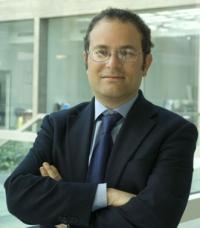HIRSCH Emilio

Strutture di riferimento
Attività scientifica
Attualmente coordina un gruppo di ricerca in ambito preclinico conl’obiettivo di identificare nuove terapie per le malattie cardiovarscolari, polmonari ed il cancro. Dall’inizio della sua carriera scientifica studia, infatti, i processi di segnalazione intracellulare innescati da stimoli ambientali. Le ricerche da lui condotte hanno svelato che malattie cardiovascolari, infiammatorie e neoplastiche possono essere controllate da una unica famigliadi enzimi segnalatori noti come fosfoinositide 3-chinasi (PI3K). Questi risultati hanno ispirato numerose aziende farmaceutiche a produrre nuovi farmaciattualmente in fase di studio clinico.
He provided seminal contributions in thecharacterization of phosphoinositide 3-kinases (PI3K) as drug targets ininflammation (Science 2000, Immunity 2002), cancer (Science Signaling 2008,Cancer Cell 2011 and 2014), heart failure (Cell 2004, Molecular Cell 2011,Circulation 2011 and 2012), and obesity (Science Signaling 2014). He producedthe first knockout mice for a PI3K catalytic subunit and demonstrated the roleof PI3Kgamma in chemotaxis of leukocytes (Science 2000; PNAS 2007, Blood 2012).He collaborated with Merck-Serono in the characterization of the first isoformselective PI3Kgamma inhibitor (Nat Med 2005) and launched an academic spin off (KitherBiotech srl) exploiting his patented PI3K inhibitors for topical treatment. Hewas the first to demonstrate that PI3K are not only enzymes but also scaffoldproteins (Cell 2004, Mol Cell 2011), showing that knock-in of a catalyticallyinactive mutant better models drug targeting than knock-out-mediatedelimination of the protein. He demonstrated that PI3Kbeta has scaffold functions(Sci Signal 2008) and that PI3Kgamma associates with PKA to integrate PI3K andcAMP signaling (Cell 2004; Mol Cell 2011; Circulation 2012). More recently, heshifted his attention to class II PI3Ks and defined the role of PI3KC2alpha inendocytosis (Nature 2013) and primary cilium function (Dev Cell 2014; JASN2015; Nat Com 2015). His work on the role of PI3KC2alpha in breast canceropened a new way to precisely predict sensitivity to Taxane-based therapies, amainstay in treatment but with so far variable and erratic efficacy (Gulluni etal., Cancer Cell, 2017).

